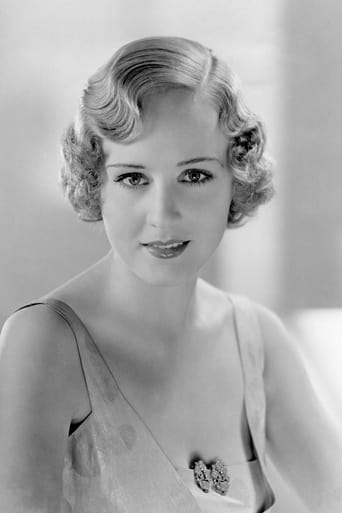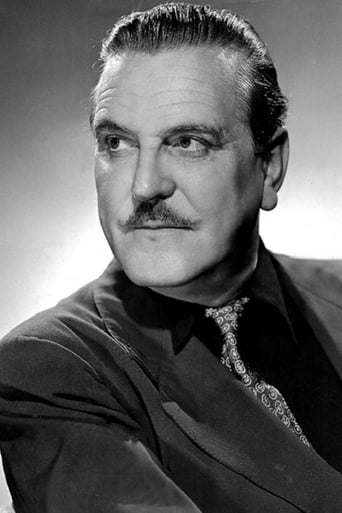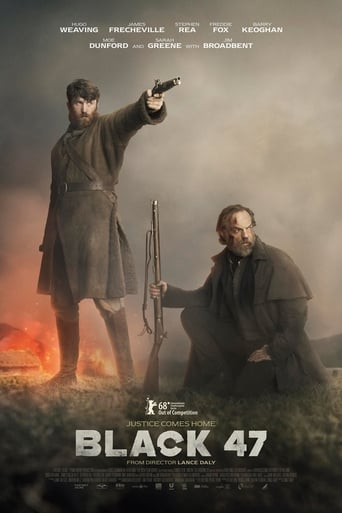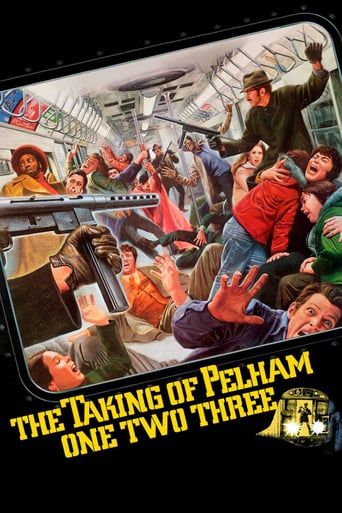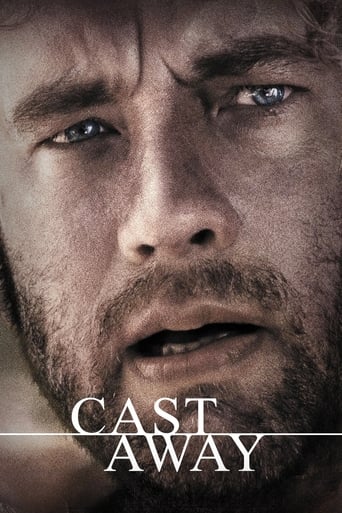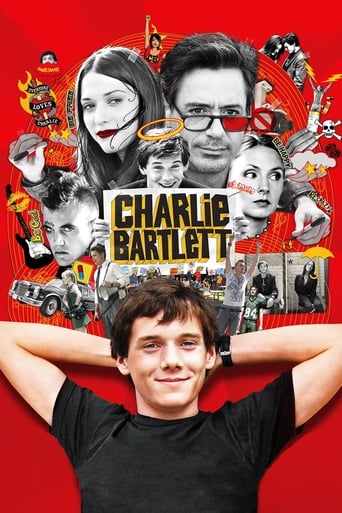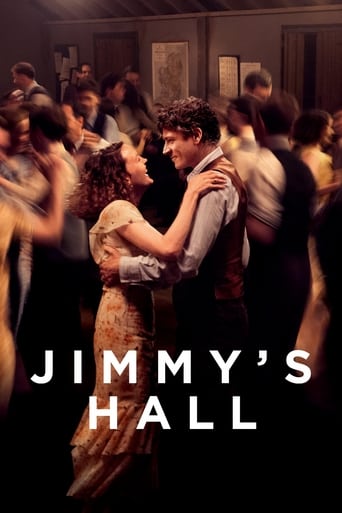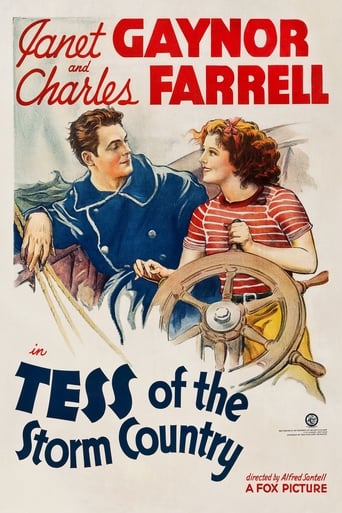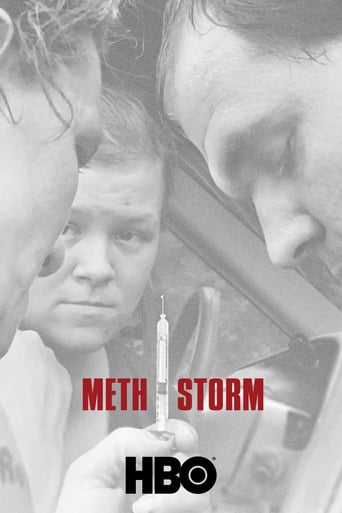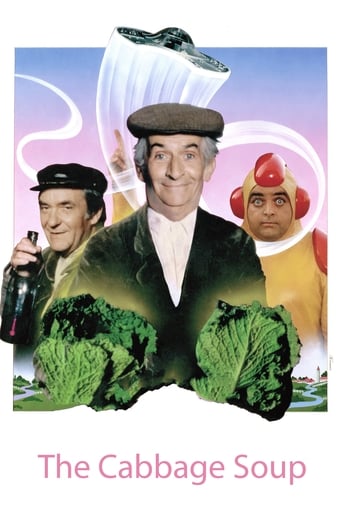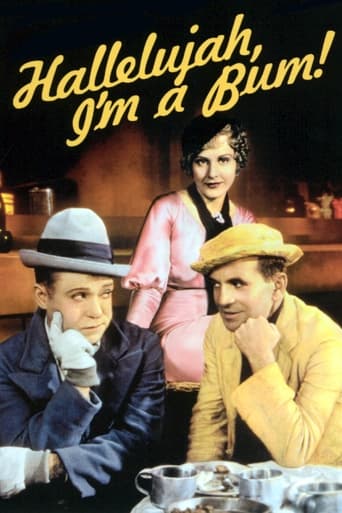
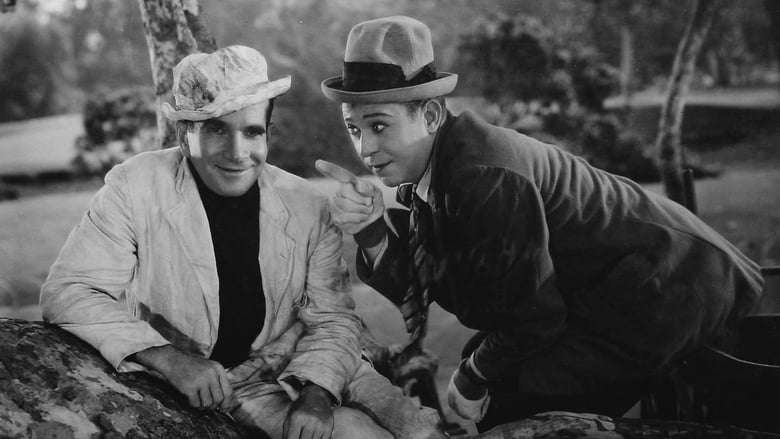
Hallelujah, I'm a Bum (1933)
A New York tramp falls in love with the mayor's amnesiac girlfriend after rescuing her from a suicide attempt.
Watch Trailer
Cast


Similar titles
Reviews
Slow pace in the most part of the movie.
A film with more than the usual spoiler issues. Talking about it in any detail feels akin to handing you a gift-wrapped present and saying, "I hope you like it -- It's a thriller about a diabolical secret experiment."
It is a whirlwind of delight --- attractive actors, stunning couture, spectacular sets and outrageous parties.
This movie feels like it was made purely to piss off people who want good shows
The story of the 1930s musical is very much the story of its stars. As the genre developed different stars came and went. And sometimes, established stars adapted alongside the musical itself. Al Jolson featured in some of the most successful movies of the early talkie era, in what were not really true musicals but stories about the music hall, essentially showcasing the persona Jolson had been playing for years on the stage. However by 1933 such theatrical musicals no longer cut it with audiences, and Hallelujah, I'm a Bum sees Jolson ditching his blackface and immaculate dinner suit for the battered attire of a down-and-outer in this topical depression-era musical in which the songs weave into the narrative.Hallelujah, I'm a Bum was not like those flimsily-plotted stage musicals, where the story really only existed to string the numbers together. Its screenplay is by no less a personage than S.N. Behrman, from a story by Ben Hecht. These two practically defined screen writing in classic-era Hollywood, and their list of credits is astounding. For this particular opus, they make light of the poverty-stricken times with a tale of homeless folk being cheerful about their situation. Rather disrespectful perhaps, but it's belittling poverty as much as it's ignoring the real unpleasantness of it. And all this jocularity builds into a very tender and poignant love story, giving a bittersweet twist without having to wallow in the depressing business going on in the streets at that time.The music and lyrics are by that celebrated duo Rodgers and Hart. Richard Rodgers is now of course better-known as having been one half of Rodgers and Hammerstein. His melodies are still just as beautiful, if a little less grand than they would be with Oscar Hammerstein, but Lorenz Hart was very much a writer of unique style, one that was crucial in the development of the genre. As oppose to the strictly stand-alone nature of most songs in musicals, Hart often leads in or out of a number with rhyming dialogue. He also has multiple singers take part in a song, often changing singer halfway through a line, making the song more a conversation than a performance. This all chimes in with the fact that the songs actually move the plot forward rather than commenting upon it.Director Lewis Milestone didn't too many musicals, but he was a great stylist as a filmmaker, using technique to build rhythms and tones on the screen. And this was ideal, because just as musicals were becoming less about stage performances, so too did they become more fluid in their stylisation. Milestone is great at making a choreography out of normal actions, such as Bumper and Acorn hitching a ride on the back of a cart on their way to New York. He makes every frame compliment the dynamics of the music at the time. In the first version of the title song, he switches quickly from a thronging crowd to a shot of Jolson on his own beside a tree, a couple of people walking leisurely in the background. It's a sublime moment.As for Jolson himself, he may have changed his clothes and surroundings, but he still has all the charm and appeal that made him the most popular entertainer of his day. At times his movements are so hammy they would look ridiculous from any lesser performer, but Jolson has such a genuine earnestness he makes us overlook that. When he makes his defence in the "trial" scene and does the little routine with two imaginary fleas, it harks right back to the music hall, but he makes it fit to this more contemporary character, pleading in a way that is comical but also endearing. A brief mention should also go to Jolson's co-star Harry Langdon, an old silent-era comic who made some truly appalling feature films in the previous decade. But as a supporting player with some kind of structure about him, he is not too bad, creating a jolly little character with some carefully-timed mannerisms. Even if Langdon wasn't a rival to Chaplin or Keaton, he was certainly a good comedy actor.The early sound era had been a testing time for the musical. The genre had been thrust to the forefront of the new medium, having had no time to develop (there were of course no silent-era musicals!). But Hallelujah, I'm a Bum is really everything a great screen musical should be, showing a dramatic shift in structure and tone but with a consistency of heart that a player like Al Jolson could bring – even if the demands upon him are slightly different. It demonstrates that, by this stage, the genre had well and truly arrived.
I see this film and love it, but I also wish to cry a little.The image of Al Jolson, to this day, is the first star of sound movies who appeared in minstrel make-up. It has damaged his historical record in a way that is hard to question. While Jolson did show up in many scenes in his films without burnt cork on his face, his show stoppers were usually his "Mammy" numbers. So people will watch him in a few films (most notably THE JAZZ SINGER, ROSE OF WASHINGTON SQUARE, and STEPHEN FOSTER) but they will not watch films like WUNDERBAR or GO INTO YOUR DANCE. You'll notice that the films ROSE OF WASHINGTON SQUARE and STEPHEN FOSTER were late in his film career, when he was supporting Tyrone Power, Alice Faye, and Don Ameche, and (in the former) the main story concentrated on Faye, and the latter was a historical film (or claimed to be) set in a period when minstrels (Jolson's "Edwin Christy") were perfectly acceptable.HALLALUJAH, I'M A BUM is a notable musical for several reasons: Jolson is able to perform in a relatively relaxed mode as a hobo - the "Mayor of Central Park". He is also shown as egalitarian, traveling around with his friend Edgar Connors (who is an African-American). The film was one of a series of musicals done in Hollywood by Richard Rodgers and Lorenz Hart (who appear in cameo parts in this film) where the dialog changes from regular speech into a singing speech the characters all join in on. This was done with George M. Cohan, Jimmy Durante, and Claudette Colbert in THE PHANTOM PRESIDENT the year before, and would reach its fruition in the film LOVE ME TONIGHT. The score is above average, with one real standard: "YOU ARE TOO BEAUTIFUL". It has a curious view on economics and happiness, due in part to the atmosphere of the Great Depression. And there are some nice side features: Frank Morgan as the Mayor of New York, Madge Evans as his girlfriend, and Harry Langdon in an odd part as a leftist part-time hobo who is also a street cleaner. Langdon (unpopular with the other hobos in general) is not the only silent film comic in the film. Chester Conklin plays a friendly carriage driver. Another hobo is played by W.C.Fields occasional performer Tammany Young.The film follows Jolson's "Bumper" on his winter vacation in the South and notes his close friendship with Morgan's Mayor. There are hints about a current scandal in New York City there: Morgan frequents the Central Park Casino with Evans for lunch and dinner. The Casino was frequented in the late 1920s and 1930s by then New York City Mayor Jimmy Walker and his girlfriend Betty Compton. Jolson stumbles onto a purse (Evans) that contains a $1,000.00 bill. He tries to return it, but Evans (after a quarrel with Morgan) has left her apartment. Subsequently Jolson does meet Evans when he rescues her in a suicide attempt that leaves her with amnesia. He falls for her, and decides to take a job to take care of her, and eventually marry her. In the meantime Morgan is troubled by Evans vanishing so totally, and starts drinking heavily. I won't go into the film's conclusion.The film shows that being a hobo means having unlimited freedom, and a lack a pressure from the cares of the world. Most of the talk-sing songs deal with the relative happiness of the hobos. Only Langdon shows the irony of the situation. He feels the world will only be set right when everyone has a job, and supports themselves. He sees a type of Communist happiness in the future. He also sees that the hobos, by cadging and living off working people and businesses (Jolson gets leftovers from the Casino) are as parasitic as the very rich. These views make Langdon unpopular generally with the hobos. Only Jolson really tolerates him at all.It is a unique musical for its time, and a welcome addition to Jolson's work. Certainly well worth viewing. But it still saddens me: if only Jolson could have made more films like this one.
To call this film "unusual" feels like a thundering understatement. Hallelujah, I'm a Bum is so strikingly original, so unlike anything else Hollywood ever attempted, one hardly knows where to begin in talking about it. What can you say about a musical-comedy-drama with satirical touches made in the darkest days of the Depression that celebrates the superiority of happy-go-lucky hobo life, centered on a motley gang of homeless people who live in Central Park and consider "work" a dirty word? What if the unofficial leader of these hobos is none other than Al Jolson, that brash show biz legend who, in this incarnation, is a humble tramp nicknamed 'Bumper' who pals around with a young black sidekick called 'Acorn'? And just to add to the incongruity, what if fading silent comedy star Harry Langdon is added to the mix as a trash collector called 'Egghead' who spouts Marxist rhetoric and warns his cohorts that the Revolution is imminent? Speaking of odd casting, what if the romantic lead of the story, the melancholy, middle-aged Mayor of New York City, is played by the Wizard of Oz himself, Frank Morgan? (And by the way, he does a damn good job!) And what if the characters switch from naturalistic dialog to Rodgers & Hart songs and then to a kind of rhyming recitative, rather like a comic operetta? In short, there's no fast or easy way to sum up the experience this movie provides, but I'll say right now that even allowing for occasional patches where the material doesn't quite come off the film is absolutely fascinating.During the transition to talkies in the early '30s director Lewis Milestone was known for dynamic effects at a time when many of his colleagues were still struggling to regain the fluidity of late silent cinema. Milestone took full advantage of his medium with swooping tracking shots, rapid montage, offbeat camera angles, and clever use of sound, and all of these techniques can be found in Hallelujah, I'm a Bum. A bravura comic highlight combining several of these effects is the sequence in which the mayor must lay a cornerstone at a new school with all due pomp and ceremony while earnest, homely children serenade him with "My Country 'Tis of Thee." This film integrates its songs into the flow of action with finesse, which is all the more impressive when you consider that only two or three years earlier most Hollywood musicals were clunky stage pageants trapped within the proscenium arch. Milestone takes the action to Central Park and stages some of his best scenes outside under the trees, although the movie's best known song, "You Are Too Beautiful," is sung by Jolson to leading lady Madge Evans on the fire escape of her dingy apartment, while couples across the street slow-dance at a club called Loveland. It's a moving scene that artfully captures the melancholia of the era.Beyond these directorial flourishes, however, the most striking thing about this movie is its off-the-wall casting. I've never seen Al Jolson as likable as he is in this film, and in a role utterly unlike anything else he attempted in his Hollywood career. He is our central figure and drives the story, yet Jolson, uncharacteristically, is nonetheless only part of an ensemble of strong performers who each make major contributions to the success of the whole. I gather Roland Young was originally cast as Mayor Hastings and filmed a number of scenes, but he took sick and was replaced by Frank Morgan. Those who know Morgan only from The Wizard of Oz or from the blustery character roles he played later in his career are in for a surprise: he is a revelation as the aging, rueful playboy mayor --doubtless based on NYC's Mayor Jimmy Walker-- who suffers from romantic difficulties with his much younger girlfriend, the gorgeous Madge Evans. Hastings is often depressed and morose, yet he's a square-dealing guy who earns our sympathy. (And in an accidental inside joke, the future Wizard of Oz at one point drunkenly intones: "There's no place like home.") Morgan is terrific, and so is Harry Langdon, the one-time silent star who received his best-ever talkie role on this occasion and rose to the challenge like a champ. A number of other silent comedy veterans appear along the way in small roles, which is a treat.There's no denying, however, that Hallelujah, I'm a Bum sugarcoats the reality of poverty, and it did so at a time when millions of formerly middle-class Americans found themselves in dire financial straits, which was doubtless a factor in the film's less-than-stellar showing at the box office. On some level audiences must have seen through the songs and comedy and recognized that some very handsomely-paid screenwriters, composers and performers were trying to convince them that they were better off poor; after all, as Jolson sings, "What Do You Want With Money?" That couldn't have gone over too well when this movie was released in the last days of the Hoover Administration, a time of bank failures, foreclosures, evictions and genuine, widespread distress. For us, the struggles of 1933 are long past, but as we deal with the problems of our own era this film stands as a fascinating time capsule, a one-of-a-kind curio that captures the mood of its age better than any other.
Slap-happy musical film that tries to use music and images together to meld a new format -- and ends up entertaining and likeable. Many of the songs are "recited" in operatic fashion, as when Jolson, the "Mayor of Central Park" (a famous bum) sings his case in court against a singing tribunal that he's been brought before on chargest of betraying his office by taking a job at a bank. A wonderful tracking shot introduces his job through sucessive levels of importance, beginning with high rollers and ending up with lyricist Lorenz Hart telling a customer he doesn't have a dime to give him. After we see all the varying levels of importance in the bank, we finally come on Jolson and his friend, doing the banking equivalent of peeling potatoes. Wonderful charm of Jolson and Langdon is dulled slightly by Morgan and Evans' stiff leads. Rodgers music and Hart's lyrics are splendid, making this one of the most original, best written original musicals of all time. It should be noted that in his years later working with Oscar Hammerstein, Rodgers only wrote one original play for film (excluding the televised "Cinderella") -- "State Fair" -- which in my opinion, though charming, has got nothing on "Hallelujah, I'm a Bum!" After the failure of this and several other Rodgers/Hart film projects, the duo returned to Broadway to become almost its only reliably successful writers in the later 30s. They left behind this little Hollywood gem to be rediscovered.



